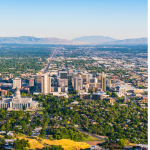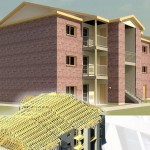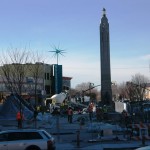 Urban planning and design play crucial roles in shaping the quality of life within our communities. From the layout of streets and buildings to the provision of parks and public spaces, every aspect of urban design influences how people interact with their environment and each other. In this comprehensive exploration, we will delve into the principles and practices of urban planning and design, examining how thoughtful design can contribute to the creation of livable, sustainable communities.
Urban planning and design play crucial roles in shaping the quality of life within our communities. From the layout of streets and buildings to the provision of parks and public spaces, every aspect of urban design influences how people interact with their environment and each other. In this comprehensive exploration, we will delve into the principles and practices of urban planning and design, examining how thoughtful design can contribute to the creation of livable, sustainable communities.
1. Understanding urban planning
Urban planning is the process of envisioning, designing, and implementing the development of cities and towns. It involves careful consideration of factors such as population growth, land use, transportation, infrastructure, and environmental sustainability. Urban planners work to create cohesive, functional communities that meet the needs of residents while promoting economic growth and environmental stewardship.
2. Principles of livable communities
- Mixed-use development: Encouraging a mix of residential, commercial, and recreational uses within neighborhoods promotes walkability and reduces reliance on cars, fostering a sense of community and social interaction.
- Accessible transportation: Well-designed transportation networks, including public transit, pedestrian pathways, and bike lanes, enhance mobility and connectivity, making it easier for residents to access essential services and amenities.
- Green spaces and public parks: Access to green spaces and public parks improves air quality, provides opportunities for recreation and relaxation, and enhances overall quality of life within urban areas.
- Sustainable design practices: Incorporating sustainable design principles such as energy efficiency, water conservation, and waste reduction minimizes environmental impact and promotes long-term resilience in the face of climate change.
3. The role of urban design
Urban design focuses on the physical layout and aesthetics of urban environments, encompassing elements such as building placement, street design, landscaping, and public amenities. By integrating principles of urban design into the planning process, cities can create visually appealing, functional spaces that enhance livability and promote community well-being.
4. Case studies in urban planning and design
- Transit-Oriented Development (TOD): TOD initiatives, such as the redevelopment of former industrial sites into mixed-use urban villages with access to public transit, have revitalized urban areas while reducing reliance on cars and promoting sustainable living.
- Complete streets: Complete Streets policies prioritize the safety and accessibility of all road users, including pedestrians, cyclists, and motorists. By incorporating features such as sidewalks, bike lanes, and traffic calming measures, Complete Streets promote active transportation and improve overall street safety.
- Urban renewal projects: Urban renewal projects aim to revitalize blighted or underutilized areas through strategic redevelopment and investment. By repurposing vacant lots and buildings, creating vibrant public spaces, and attracting businesses and residents, urban renewal projects can transform neglected neighborhoods into thriving communities.
5. Embracing community engagement
Engaging with the community is essential in the urban planning and design process. By involving residents, businesses, and other stakeholders in decision-making, planners can gain valuable insights into local needs, preferences, and priorities. Community input helps ensure that planning efforts are inclusive, responsive, and reflective of the diverse interests and perspectives within the community.
6. Promoting equity and social justice
Equity and social justice are central considerations in urban planning and design. Planners must strive to create inclusive, equitable communities where all residents have access to essential services, opportunities, and resources. This requires addressing systemic inequalities, such as disparities in access to housing, education, healthcare, and transportation, and prioritizing the needs of marginalized and underserved populations.
7. Adaptive reuse and historic preservation
Preserving historic buildings and landmarks through adaptive reuse projects contributes to the character, identity, and cultural richness of cities. By repurposing old buildings for new uses, cities can breathe new life into historic neighborhoods while retaining their unique charm and heritage. Historic preservation also promotes sustainability by reducing the environmental impact of demolition and new construction.
8. Prioritizing resilience and climate adaptation
Incorporating resilience and climate adaptation measures into urban planning and design is essential for mitigating the impacts of climate change and ensuring the long-term sustainability of communities. Strategies such as green infrastructure, floodplain management, and heat mitigation can help cities adapt to changing environmental conditions and minimize risks from extreme weather events. By prioritizing resilience, cities can build stronger, more resilient communities that are better equipped to withstand the challenges of a changing climate.
McNeil Engineering
Ready to shape the future of your community through thoughtful design and planning? McNeil Engineering offers comprehensive design services, including civil engineering, structural engineering, land surveying, and landscape architecture, to help bring your vision to life. Whether you’re embarking on a new development project or revitalizing an existing area, McNeil Engineering is committed to delivering innovative, sustainable design solutions that enhance the livability of our cities and towns.
Urban planning and design are integral components of creating livable, sustainable communities that meet the needs of residents now and in the future. By embracing principles such as mixed-use development, accessible transportation, green spaces, and sustainable design practices, cities can foster environments that promote health, happiness, and prosperity for all. With the expertise and dedication of firms like McNeil Engineering, we can continue to shape our cities into vibrant, thriving places where people want to live, work, and play.








